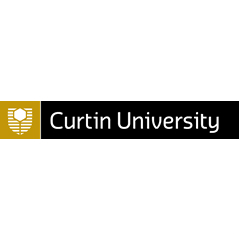Full description
Four orchards in the Huon Valley Region, southern Tasmania, Australia, were surveyed by Kit S. Prendergast in October 2019. Three orchards (Lymington, Cradoc and Geeveston) of which were “Certified Organic” (Australian Organic Ltd, 2019), and one (Plenty) which used Integrated Pest Management (IPM). Only the IPM orchard had managed honeybee colonies (30 colonies, at densities of approximately 2.5 colonies/ha). Each orchard was surveyed for three days in succession during the flowering season. Orchards were only surveyed on days that were suitable for bee activity, namely when temperatures were >15oC, partly cloudy to sunny condition, with windspeeds <20 km/hr, and no rain. Orchards were surveyed both passively using bee bowls (also known as pan traps in the literature) (Prendergast et al. 2020), and sweep-netting. Three sets of bee bowls (250 mL plastic bowls) were set out at 9am and collected at 4pm (7 hours duration). Each set consisted of a triplet of fluoro blue, fluoro yellow and white bowls placed 3 m apart from each other flush on open grassland. Each triplet set was placed at least 30 m distant. Bowls were half filled with water and unscented liquid soap (1 : 0.01 water: soap). Netting was conducted with an entomological sweep-net. For 1.5 hours in the morning, and again in the afternoon, Kit S. Prendergast slowly traversed the orchard and netted wild bees from apple blossoms, amounting to a total of 3 hours per survey. Due to differences in orchard lay-out, fixed transects were not used, but rather the sampling effort was standardised by duration. Effort was made to collect all bees observed; although the introduced bees can be identified on the wing, counts were based on collections so as to standardise sampling among the three bee taxa, given that observational counts can greatly exceed numbers of specimens collected (Prendergast et al., 2020). Interspersed between the apple blossom surveys, a total of 3 hours was spent netting native bees from other flowering plants within and surrounding the orchard (within a radius of 50 m from the border of the apple orchard). Thus each orchard and the surrounding vegetation was surveyed for a total of 6 hrs per day, totalling 18 hrs over the three days of surveying each orchard. All specimens were stored in labelled jars in ethanol and pinned later in the lab. Kit S. Prendergast identified specimens using published keys where available (Batley & Houston 2012; Exley 1976; Walker 1986; Walker 1995), consulting published descriptions (Cockerell 1914, 1918, 1905, 1930) and PaDIL ( https://www.padil.gov.au/ )dcmiPoint: east=146.43; north=-43.12
Subjects
Agricultural and Veterinary Sciences |
Agriculture, Land and Farm Management |
Biological Sciences |
Community Ecology |
Ecology |
Forestry Sciences |
Forestry Management and Environment |
Sustainable Agricultural Development |
Tasmania |
Terrestrial Ecology |
apples |
entomology |
insects |
native bees |
orchards |
pollinators |
wild bees |
User Contributed Tags
Login to tag this record with meaningful keywords to make it easier to discover
Identifiers
- DOI : 10.25917/5ee9d9bde413c



